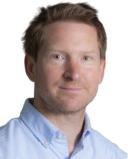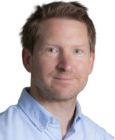Over 50 years ago, Dr. Arthur Janov created Primal Therapy. At the time, he was operating in an experimental and contested mental health environment. Ex-patient groups, whose members referred to themselves as "survivors" or freed "slaves," garnered attention. Antipsychiatry was on the rise. More and more people were leaving the asylum system.
With degrees from UCLA, a Ph.D. in psychology from Claremont Graduate School, and sporting a shock of curly hair, Janov created Primal Therapy in 1967. Tapping into the California counterculture and appealing to celebrities with his avant-garde approach, he created an unconventional therapy that resonated throughout the 1970s and beyond.
It was a form of therapy in which patients entered extreme emotional states to allow for the jettisoning of any deep-rooted “Primal Pain” experienced in childhood.

In addition, the method was often accompanied by shouting and screaming, wild gestures, jumping up and down. After all this, “post-Primal” patients would attain a genuine normality, thereafter occupying healthy, neurosis-free bodies.
Janov laid out his main ideas in his 1970 book, Primal Therapy: The Cure for Neurosis. The California-based Janov had worked as a psychotherapist for the Los Angeles Children’s Hospital and Veterans Administration, among other places, when in 1967 he developed his theory. In a series of books between 1970 and 1972, Janov contended that patients who finished his therapy effectively would overcome the diseased mind common to most people. Even more, he suggested that his therapy offered physical cures. Repression, in Janov’s estimation, stunted physical development, but successful Primal Therapy would enable the natural growth of breasts, hair, and hands.
Janov’s therapy struck a chord with the countercultural set and other Americans hungry for alternative approaches to the mainstream establishment. At the time, Americans both within and outside the medical sphere were questioning the rise of psychopharmacology and the proper classification of mental illnesses. Many were challenging psychoanalysis as well.
In his books and public appearances, Janov cagily teased out and played around with themes of intergenerational antagonism, repression caused by postwar society, and the ways in which physical experiences and emotions trumped neutral reasoning; he touted altered states of consciousness and the more specific view that personal (and perhaps national) liberation depended upon the violent overthrow of corrupt systems. These altered states did not include pot, LSD, or MDMA and had to be reached without any artificial aids. A bit of an outlier, Janov fully rejected the use of illegal intoxicants, uninhibited sexual activity (“free love”), and transcendental meditation. He felt these were not pathways to fulfillment but rather unconscious compulsions of an unwell mind.
Following his first book, he later published The Anatomy of Mental Illness and The Primal Revolution. He gained some support among the celebrity class: John Lennon and Yoko Ono, who of course experimented with many substances, underwent Primal Therapy in 1970 after The Beatles disbanded and—along with a “primal concept album” John Lennon / Plastic Ono Band (1970)—helped popularize the therapy.
Primal Therapy resonated with Americans. First, the concept of “cure” had become so alien within the field of psychiatry and psychology that to make such a claim was to invite professional incredulity. Janov’s Primal Therapy promised a fix, not just continuing therapy sessions. Even as the theories leveled criticisms at the “medical model” of mental illness and departed from standard psychotherapy, Janov ambitiously couched his therapies in the terminology of diseases and cures.
Second, the divergent approaches became hallmarks of the “feeling” and encounter group movement or the humanistic/experiential movement therapies popular of the era. These were not value-free, one-on-one, neutral methodologies. Not at all. Rather, Primal Therapy was a full-on session, both draining and loud, honest and difficult. For some patients, this lent the approach authenticity—legitimacy in a New Age.
Third, TA and Primal Therapy represented for many Americans innovation, the avant-garde, a break from the tired pointy-bearded therapist of the 1950s. This new therapy marked changed, for some. Janov's success, however brief, was partially based on using the fierce energy of the counterculture and about appealing to American minds with a mental health therapy/product that was fresh.
See past Psychology Today posts about Primal Therapy here.
Material for this article came from Break On Through: Radical Psychiatry and the American Counterculture.
References
[1] Paul Williams and Brian Edgar, “Tommy, Primal Therapy, and the Counter-cultural Critique of ‘Sick Society’ and ‘Cripple Psychology’,” Journal of Literary and Cultural Disability Studies 9, no. 2 (2015): 207-223.
Janov, A. (1970). Primal Therapy: The cure for neurosis. G.P .Putnam's Sons. 1970.
Janov, Arthur. (1971). The Anatomy of Mental Illness: The Scientific Basis of Primal Therapy. New York: G.P. Putnam's Sons.
Janov, Arthur (1972). The Primal Revolution: Toward a Real World. New York: Simon and Schuster.




